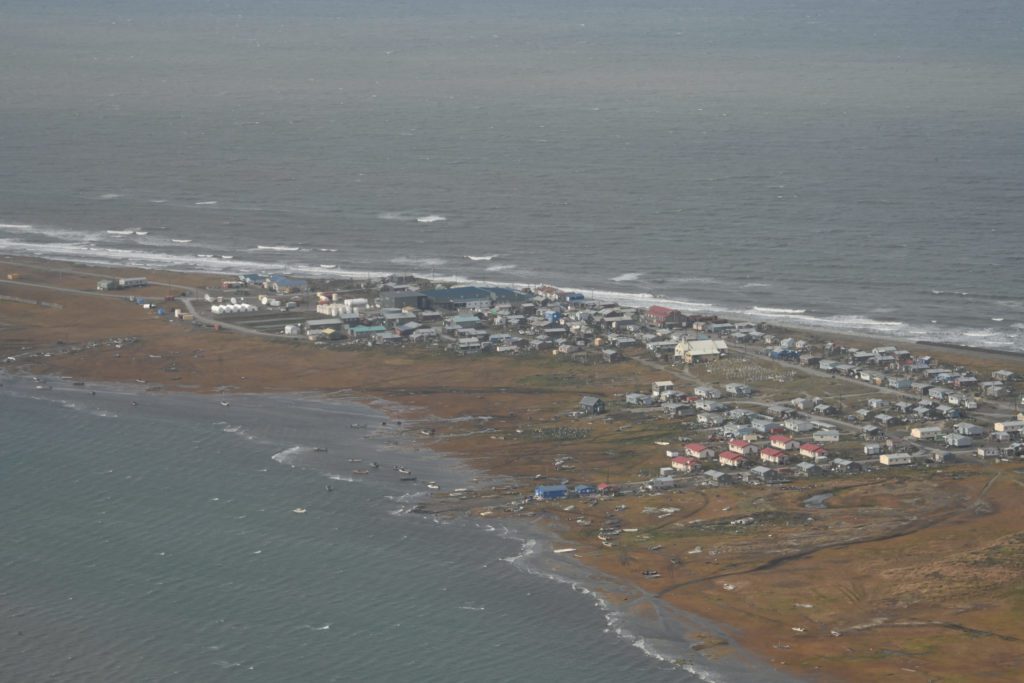
Flood waters are receding in storm-battered western Alaska, where wind and water wreaked havoc over the weekend. Communities in the region traditionally pull together to help each other, and individuals, nonprofits and the state government quickly stepped up to provide support and resources after Typhoon Merbok, one of the fiercest storms to hit Alaska’s western shores in years.
By Tuesday, Gov. Mike Dunleavy had requested a federal disaster declaration, and state agencies had already completed their damage assessment on private homes, roads, airports, electric power, potable water sources and erosion over a coastal area more than 1,000 miles wide.
The governor said he had no doubt that preparation for the storm by community leaders had saved lives and minimized damage. He expressed gratitude that there were no reports of serious injuries, missing persons or deaths from the storm.
Even so, some residents suffered significant loss, including a woman from Golovin who gave birth to her first child in Nome during the storm, but learned that her home, which she had worked for several years to restore, had suffered severe flood damage. The Anchorage Daily News reported that the new mother’s sister said that flood waters rose to three-to-four feet in the house, so everything in the home would have to be replaced.
The request for federal assistance asks President Joe Biden to issue a declaration of a major disaster and activate public and individual grant programs. It also requests that the federal government provide for a 100% federal share through the declaration to support rural, insular and predominantly Alaska Native communities impacted by the storm.
The state also asked that the Small Business Administration disaster loan programs be activated for businesses impacted by the storm and homeowners whose residences were damaged. The governor’s office said that the Hazard Mitigation Grant Program would be funded through the federal disaster declaration for future infrastructure and resilience projects in Alaska.
Major concerns were compromised wells, the availability of drinking water and housing for people whose homes were severely damaged by the wind and flood waters. While some homes were damaged, it was not the catastrophe that could have happened, with multiple people losing everything they owned, state officials said.
Coast Guard officials said storm waves reached as high as 54 feet in some areas, crashing over sea walls.

The western Alaska National Guard has been activated, and the region is receiving help from state agencies, the Red Cross and other volunteer organizations. The pressure to make repairs and replace losses is urgent, with freezing temperatures expected within two to three weeks.
“If the federal disaster declaration is approved, we will be able to address the disaster costs and help the communities cope with the physical damage,” he said. The request for the state disaster declaration was issued quickly after being requested by Homeland Security and Emergency Management Director Bryan Fisher. A federal disaster declaration, which would bring federal funding and support for the recovery phase of the storm, includes three categories: assistance to individuals and households, public assistance for emergency services and to repair or replace public facilities, and hazard mitigation assistance to pay for measures designed to reduce future losses to public and private property.
Warning of the advancing storm started coming in on Tuesday, Sept. 13, from the National Weather Service. By Wednesday, the state’s Emergency Operation s Center had begun initial coordination with state agencies, the Red Cross, Salvation Army and the Federal Emergency Management Agency (FEMA). On Thursday that week, state agencies were contacting communities from the Aleutian and Pribilof Islands to the western Arctic coast, to ensure they were prepared for high winds and the surging storm. All communities had taken action to hunker down before the storm hit, state officials said.





